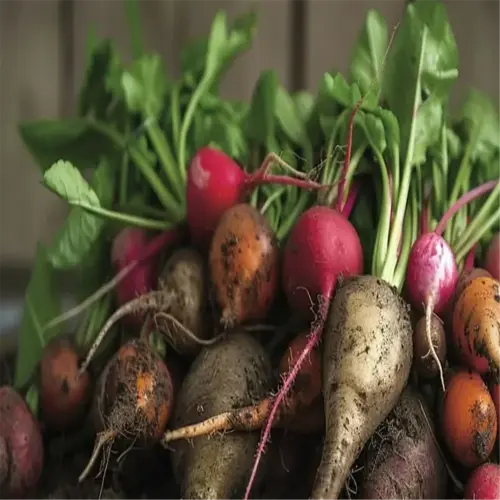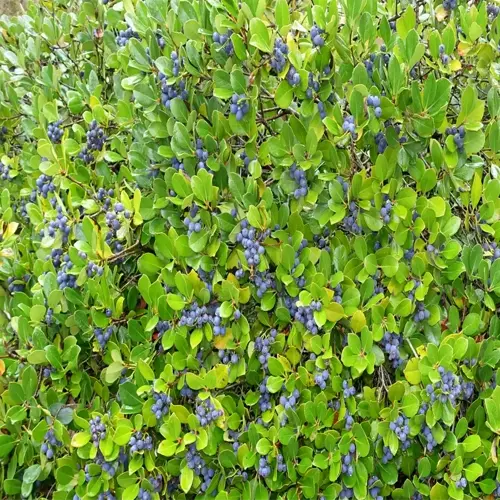How to Grow Broccoli: Expert Tips for Home Gardens

Written by
Nguyen Minh
Reviewed by
Prof. Charles Hartman, Ph.D.Broccoli cultivation: Select heat/cold tolerant varieties that are appropriate for your climate
Grow in early spring or late summer for maximum harvests
Maintain soil pH of 6.0-7.0 and enrich soil using compost to develop nutrient-rich beds
Use floating row covers and Bt spray to deter pests
Harvest the main heads when they reach 6-8 inches in diameter, leaving the stems for side shoots
Store broccoli in breathable bags, or blanch before freezing.
Article Navigation
The first step to understanding how to grow broccoli is to recognize its nutritional value. This delicious green vegetable is a rich source of vitamin C, fiber, and antioxidants. Broccoli is one of those vegetables that I love growing and cooking fresh from the garden, as I find they are tastier and sweeter than those from the grocery store. This sweet flavor keeps me coming back to plant broccoli every year.
Broccoli can grow well in almost any climate as long as you purchase the right variety. Cold-hardy Arcadia will survive a frost, while heat-tolerant Gypsy will thrive in warmer areas. Before buying your plant, review your USDA hardiness zone. Timing is important, start your seeds indoors six weeks before your last spring frost.
New growers frequently overwater seedlings or cram plants too deeply. For airflow, be sure to space the seedlings 18 to 24 inches apart. Overwatering is the cause of root rot. I lost my first crop this way. To determine if it's necessary to water, stick a finger an inch into the soil; if it's damp, skip the watering regardless of the amount of time since the last watering.
The time of planting often makes or breaks your harvest for the season. For zone 5, my spring crops will be transplanted in mid-April, and my fall crops will be transplanted in late July. If I am delayed on these dates, the summer heat can lead to premature flowering. If temperatures are expected to be above 75°F, shade cloth should be utilized.
Soil Prep & Planting Guide
You must test your soil pH to ensure you know how to successfully grow broccoli. What I do is buy an inexpensive ($15), easy-to-use kit from my local garden center. Naturally, testing can be done more accurately, you can send samples to your local extension lab. Broccoli likes a 6.0-7.0 pH; if the soil pH is too low, you can add lime; if it is too high, you can add sulfur.
Raised garden beds allow you to exercise control over your planting area. Construct a raised bed between 12-18 inches, using untreated wood or stone material. Our formula consists of 60% garden soil, 30% compost, and 10 % perlite. I also add worm castings to bolster the nitrogen content and within a few days of applying the mix, I've noticed the broccoli's leaves darken in appearance.
Compost and manure are not the same thing. Compost supplies nutrition in a balanced manner, while aged manure provides increased nitrogen. I made a mistake and ruined a whole crop using fresh chicken manure as it essentially burned the roots of the plant. For steady growth, stick with compost, only add manure if you notice that the leaves are yellow due to deficiency.
Spacing affects your harvest. Plant your seedlings *18-24 inches apart* and *36 inches across*, and don't plant them too close together! Crowded seedlings compete for light and you will end up with heads no bigger than a golf ball. Last year, I tripled my yield of Arcadia, simply by giving the seedlings space to spread their blue-green leaves.
Ideal Planting Times for Every Climate
USDA zones 3-7 require precise timing for broccoli to succeed. Start seeds indoors 6-8 weeks before your last frost (mid-March in Maine, early April in Michigan). For southern growers in zones 8-12, you can start fall crops whenever nights are consistently below 70°F (usually late September through October).
Everything hinges on your local frost dates. I monitor mine utilizing the online Old Farmer's Almanac tool. In Minnesota (zone 4), I transplant seedlings no later than May 15. Texas gardeners in zone 9 wait until October 1 to help avoid the summer heat catching the way of germination.
Seeds germinate best when soil temperatures are between 40°F (4°C) and 80°F (27°C); below 40°F and the seed may just sit there, growth ceases. Above 85°F, the plant will bolt for the flower before forming heads. In early spring, I utilized black plastic mulch to pre-warm soil, which assisted my germination rate last year by 30%.
Fall planting can be a great benefit to southern gardens; with cooler temperatures, we can expect less pest pressure while cultivating improved flavor. For example, in Arizona, I grow Green Magic broccoli as my fall crop which I plant from September through December. The heads form more slowly in the fall, but I find that they have a noticeably sweeter taste than in spring. If temperatures rise unexpectedly, use shade cloth to shield the plants as if it is early to mid-summer.
Best Broccoli Varieties for Home Gardens
Deciding between cold-hardy Arcadia and heat-tolerant Gypsy will ultimately shape your level of success growing broccoli. Arcadia can withstand a sudden cold snap in weather down to 28°F (-2°C), while Gypsy can grow in plant hardiness zones 7 -10, along with extra bolting resistance with maximum temperatures of 85°F (29°C). I have experience growing both varieties, and Arcadia's frost-resistant heads were instrumental in saving my fall crop during a surprise cold snap.
The container-gardening champ is Green Magic in the 12-inch tall, 1-pound head category. On my apartment balcony, I've harvested six side shoots from each plant, using a 5-gallon bucket to grow each plant. A 57-day crop means you could get three succession plantings, between April and October, in most areas.
Select your flavors based on your planting schedule: Green Magic (57 days), Arcadia (63 days), Romanesco (75-100 days). I plant every 2 weeks on staggered intervals, for consistent harvests. Early varieties can fill in the gaps with longer growing crops. You can also use the sprouting broccoli Green Magic for early harvest, then follow it up with the slower growing Gypsy in the same bed after the first harvest.
The lime-green fractal heads of romanesco contribute irresistibly to gardens and dishes alike. The nutty flavor of this brassica becomes pronounced when roasted. Though it is frost-sensitive, I've managed to grow it in zone 6 by sowing in August for harvests in October. When frost threatens, cover the heads with row covers and they'll do just fine.
Watering, Feeding, & Pest Control
When watering broccoli, use drip irrigation instead of overhead watering. Drip irrigation reduces leaf diseases because it allows you to irrigate the root zone while keeping the foliage dry. Last year, I had a $25 soaker hose system rigged up, and my plants were 20% larger than with my sprinklers. Overhead watering leads to wasted water and it makes the foliage more susceptible to mildew in humid areas.
Nitrogen is what fuels head formation. I add blood meal into the soil at planting (1 cup per 10 square feet of soil) and side-dress with compost tea every three weeks. After heads form, do not use high-nitrogen feeds. You will push leaves at the expense of the developing florets from excess nitrogen.
Did you notice five caterpillars? Proceed to Bt Spray. It's organic bacteria that disable the pest in a few hours. With aphids, blast them off with the hose or use soapy water. (1 tsp of dish soap per quart of water) I will take action when 10 or more gather and cluster because they multiply overnight.
Be careful with clay soils. Test the soil with a stick or a spade to see if it is muddy when pulled from the ground; if so, wait to water the beds. I had a crop die from root rot before discovering this. You can add coarse sand or build raised beds to help improve drainage for those finicky broccoli roots.
Harvesting & Storing Tips
When harvesting broccoli, buds should be "nice and tight," like unopened kernels of popcorn. When the heads reach 4-6", check every day. Once I missed this window, and the florets opened into brilliant yellow flowers overnight and had a bitter taste. Harvest broccoli with a sharp knife, cutting 6 inches below the head of the plant.
Avoid uprooting plants after complete harvest. Side shoots will appear from leaf joints in 7-10 days in a watered state. My Green Magic variety produced an additional 12 mini-heads last fall, which was just ideal for stir-fries! Trim the leaves blocking new shoots to encourage growth.
Blanch florets by briefly submerging them into boiling water for 3 minutes, after which cool them down by placing them into ice water for 4 minutes.Pat dry, placing the florets into a gallon-sized freezer bag. I vacuum-pack the florets into portions using a straw. This method helps to preserve flavor and quality from freezer burn than simply using plastic wrap. Plan to eat frozen broccoli within 9 months, for peak flavor.
Store unwashed heads of lettuce in perforated bags lined with paper towels in the refrigerator. When the stems are moist, they will become slimy and poorly textured. I lost a whole batch of lettuce once because I rinsed my lettuce before storage; now I only rinse it before cooking it. Keep your refrigerator at 34-40°F (1-4°C); if the temperature is too warm, it will turn yellow and lose nutrients more rapidly.
5 Common Myths
For successful broccoli growth, it requires full-sunlight all day.
Although broccoli can grow in only 6-8 hours of sunlight, it can also tolerate partial shading (4-5 hours) in the warmer zones 7-10. Anything over 80°F (27C) may cause bolting, experiencing a morning sun with an afternoon shade is best for successful summer crops.
Broccoli florets are the only edible and therefore beneficial part of the broccoli plant.
Broccoli leaves contain 3x more vitamin A than the florets do, and the stems provide fiber. You can steam the leaves like you would using kale, or sauté the stems with a little garlic; either way, you get 90% of the broccoli plant, nutrition wise.
Transplanting store-bought seedlings ensures higher yield than using seeds.
Direct-sown seeds planted in soil with temperatures less than 70°F (21C) allow the plant to develop a stronger taproot. Gardeners in zones 3-6 can expect 20% larger heads if they direct-sow seeds at 1 inch in depth 4 weeks before the last frost.
Broccoli can grow in pots and small gardens.
Green Magic and Artwork varieties produce 1-pound heads in 12-inch pots. For additional growing space, you can use 5-gallon buckets with drainage holes, and stake your plants when the heads are around 4 inches (10 cm) across.
Each variety of broccoli requires over 100 days to mature.
Gypsy (58 days) and Green Magic (57 days) actually produce harvest-ready heads in only eight weeks! When planting on a three-week cycle, you can add more harvests and not extend the growing periods.
Conclusion
The art of growing broccoli can be distilled down to three main aspects: choosing the correct variety , soil preparation, and preventing pests.Select varieties that match your climate, heat tolerant Gypsy for southern gardens and frost tolerant Arcadia for northern sites. Come spring, do a yearly test of your pH in soil, amendment would be lime or sulfur. Check your plants for caterpillars weekly, and row covers can be the best option if you see any.
Timing is everything. My zone 6 garden excels with April transplants and succession crops in August. Of course, southern growers would want to reverse them, planting in October for harvests in December. If you get behind that timing and miss those windows, heat or frost will be your enemy. Seriously, keep track of your local frost dates.
Don't be discouraged by tight spaces. Green Magic does superbly well in 5-gallon buckets, even on patios. I have grown that plant with great success in buckets on my patio and have grown as many as 8 plants this way. Its small size allows you to plant broccoli in between flowers or herbs. Try succession planting every 14 days for a continual harvest!
Don't forget: begin spring seedlings indoors 6 weeks ahead of last frost. For fall crops, sow directly into your garden when your evenings drop to 60°F (15°C). I like to set reminders on my phone; this is a simple habit that ensures I can stay within prime windows for planting seedlings outdoors.
External Sources
Frequently Asked Questions
How do you grow broccoli for beginners?
Start with disease-resistant varieties like Gypsy or Green Magic. Plant in fertile, well-drained soil with a pH of 6.0-7.0. Water deeply once a week and use row covers to prevent pest damage.
How many broccoli heads does one plant produce?
Each plant yields one main head. After harvesting the central head, most varieties produce smaller side shoots for 4-6 weeks. For continuous yields, plant succession crops every 3 weeks.
What mistakes should you avoid when planting broccoli?
Avoid these common errors:
- Planting in compacted or sandy soil
- Overcrowding plants (space 18-24 inches apart)
- Fertilizing with high nitrogen formulas late in the season
- Ignoring aphid or caterpillar infestations
Does broccoli need full sunlight?
Broccoli thrives in 6-8 hours of sunlight daily. In zones 8-10, provide afternoon shade to prevent bolting. Northern gardeners can plant in full sun without heat stress concerns.
Can you grow broccoli in containers?
Yes. Use 5-gallon pots with drainage holes and fill with a mix of potting soil, compost, and perlite. Compact varieties like Green Magic yield best in containers. Water daily in hot weather.
What plants harm broccoli growth?
Avoid planting near:
- Tomatoes (compete for nutrients)
- Strawberries (attract slugs)
- Pole beans (shade broccoli)
- Mustard greens (share pests)
How do you store freshly harvested broccoli?
Keep unwashed heads in perforated plastic bags in the fridge for 3-5 days. For long-term storage, blanch florets in boiling water for 3 minutes, chill in ice water, and freeze in airtight containers.
Why does broccoli form small, loose heads?
Small heads result from:
- Temperature fluctuations above 75°F (24°C)
- Inconsistent watering
- Low soil nitrogen
- Overcrowded plants
When is the best time to plant broccoli?
In most regions, plant seeds indoors 6-8 weeks before the last spring frost. For fall crops, transplant seedlings 10-12 weeks before the first expected frost.
Are coffee grounds beneficial for broccoli?
Yes. Mix 1 cup of used coffee grounds into soil per plant to boost nitrogen and deter slugs. Avoid overapplication, as excess acidity can lower soil pH below 6.0.

